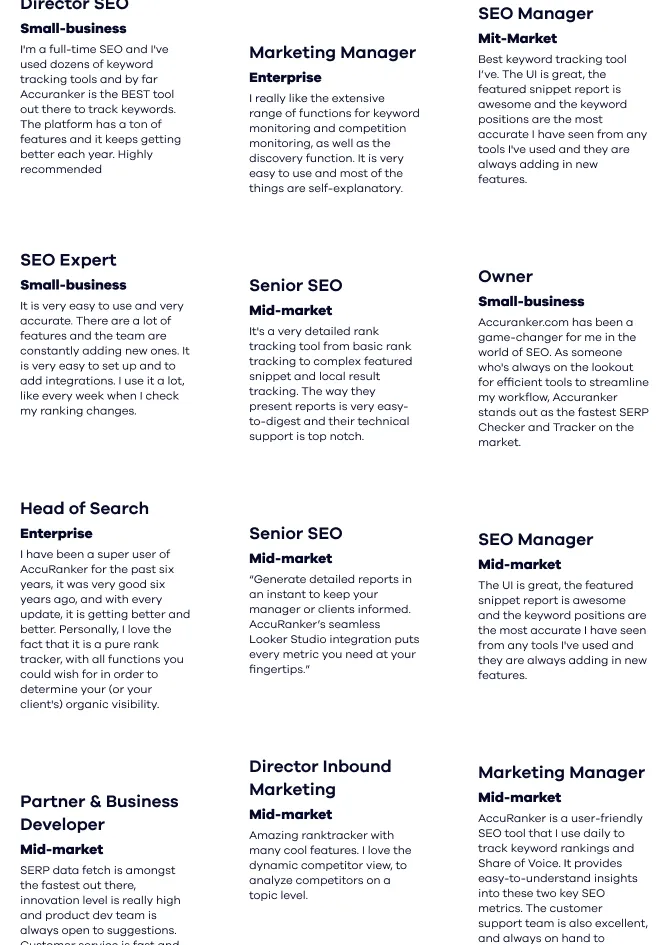How to Drive Highly Targeted Traffic With On-Page and Off-Page SEO
AdvancedHow to choose the best keywords for SEO?

Keyword Organic Search Volume Online
Search engine optimization (SEO) includes a broad range of techniques, from social media marketing to keyword usage, that are used to help a website appear more often and more visibly in the results of an online search. In today’s digital world, every business or entrepreneur must have a good grasp of SEO. At its heart, SEO is about designing your site to give visitors the best possible experience, so it should come fairly naturally.
Think of SEO as your website’s way of communicating with the search engines. The search engine’s job is to put relevant content in front of users. If you provide clear and accurate information about your site’s content, search engines will show your site to users who will be interested in it. You get targeted traffic, users find what they are looking for, and the search engine’s job is done. Everyone wins.
Behind the Curtain
Search engines index websites by sending “spider” robots to “crawl” through links and record every page and document they discover. After collecting all the available SEO data, the search engine uses algorithms to automatically calculate the relevance and popularity of a site. Hundreds of factors contribute to these complex calculations, most of which you do not need to know. You just need to know what aspects of your site tell a search engine that it is a quality site and which ones might tell it otherwise. SEO can be divided into on-page and off-page techniques. A successful site usually employs both.
On-Page SEO
On-page SEO refers simply to everything about a website itself. It has the potential to affect its ranking in search results, and includes aspects which are not visible to a user or do not appear on any page.
At a slightly more advanced level, you can use HTML text formatting to tailor your SEO. Search engines place more weight on text that appears in headers and subheaders, and text that is bolded. The most important part of your on-page SEO, however, is your content. Recent, high-quality content will do more to boost your rankings than everything else combined.
Search engines are not good at reading media such as images and videos, or anything displayed using Flash or Java. You should always use ALT attributes to describe images and provide partial text transcripts for video and audio. You can check the Google cache of your site to see what parts of your site are visible to a search engine.
Finally, keep in mind that search engine results only display the first 65 to 75 characters of a page’s title, and the first 160 characters of its metadata tag. Ideally, you should try to stay under these limits. If you can’t, then at least make sure you convey the most important information before reaching the limit so that users will be able to see and be influenced by it.
Keywords and Search Volume
Search engines sort websites using keywords. If you build a website about good study habits and you use the word “study” a lot in text on the site, a search engine will store your site’s information in a database alongside other sites with the same keyword. A site such as Instagram, for example, will be stored in an entirely different database. When someone makes a search, the search engine shows them ranked results pulled from the matching database. Instagram probably has a much higher ranking than your site overall, but if someone searches for “how to study,” they are way more likely to see your site.
You can deliberately design your site to be associated with certain keywords. This is a powerful way to help your target audience find your site. People who are new to SEO often try to abuse keywords, with poor results. According to Google Trends, “Instagram” is consistently one of the most-searched keywords. However, trying to get your study site ranked for this keyword is not such a great idea. There are two reasons for this.
First, even if you succeed in becoming associated with the keyword “Instagram,” your site about studying will still be considered less relevant than other sites. Secondly, even if you did somehow rise high enough in the rankings for that keyword for anyone to actually see your site, people searching for “Instagram” are not likely to be looking for tips on studying. People might see your site in a list of results, but you won’t be getting targeted traffic.
The goal should be to use keywords that are as relevant and narrow as possible, without being obscure. These are called long tail keywords. They key is to find the “sweet spot”, where your keyword has a decent amount of monthly searches but low to medium competition. You can use Google’s Keyword Tool and type in your desired search phrase to do research on it. A good long-tail keyword is usually four or five words long, with an average global search volume between 2,500 and 5,000, and low to medium competition.
These keywords will help you get highly targeted traffic, and shouldn’t be too hard to rank for. Once you have chosen the keywords that best represent your site, placing them will be simple.
1. A keyword should appear once in a page’s title tag, as close to the beginning of the title as possible.
2. It should appear once again near the top of the page, whether in a subtitle, menu, or some other way.
3. It should appear once in the ALT attribute text of an image on the page.
4. It should appear once in the page URL itself. Be especially careful about putting too many keywords in a URL, as search engines use that as a basis to flag sites as spam.
5. It should appear once in the meta description tag. This has no effect on search engine rankings, but users see it when they find your page as a search result and will be more likely to visit your site.
6. It should appear two or three times in the body text of the site, preferably with small variations. You might use it more if the page has a lot of text, but you do not need to force it. Using a keyword more than a couple times has no discernible effect on your site’s ranking. Contrary to popular belief, search engine algorithms often ignore keyword density.
7. It should never appear in internal links. Usually, only one page from your site will appear in the results of a search, and using a keyword as part of an internal link might cause the wrong page to show up. For example, your site has one article about studying with music and one about flashcards, and you use the keyword “flashcards” in a link to the first page; somebody who searches “flashcards” might see your page about music instead — and probably ignore it. This is called keyword cannibalization.
Search Purposes
Making sure your site shows up in a search is only half the battle. You want people to click on your site instead of a different one. Try to put yourself in the shoes of your target audience and figure out what they want out of a search. For example, a person who searches for “studying tips” just wants information, while a person who searches for “study.com” is trying to get to a specific website and will likely ignore other results. Someone who searches specifically for “studying guide” is more likely to be looking to buy an actual product, so if your site is selling e-books that teach you to study, then that is a better keyword to go with.
Off-Page SEO
Techniques that boost a site’s search ranking but do not appear on the site itself are known as off-page SEO. Examples include link building and social media marketing. Search engines use off-page SEO to determine how other people see your site.
Link Building and SEO
Search engines consider links to be an indicator of authority. If other sites constantly link to your site as a place to find good studying tips, then the search engines will start sending you more traffic that is searching for that topic. These links count for more if they come from other authority sites. It is nice if your friend puts a link to your site on his blog, but you will get a much better ranking if someone puts your link on the official site that has strong backlinks and great SEO.
Links also have more value if they come from sites that talk about similar topics. A link to your studying site from the website of Brown University might count for more than the one from Clash of Clans, even though it is a less popular website overall.
On the flip side, a site that shares links with sites that have a bad ranking with the search engines can be flagged as well. Be careful about whom you link to, and be wary of link trading.
Off-Page SEO Techniques
As is the case with SEO in general, the best way to build off-page SEO is to have consistent, high-quality content. If people like what they find on your site, they are more likely to share it with friends on social media and other platforms. While on-page SEO is a way for you to give a search engine information about your site, off-page SEO is how everyone else gives their opinion. The search engines are able to track user engagement to see if people are truly enjoying your site, and then they determine your ranking accordingly.
Once your site starts to become more popular, you can maximize your results by asking satisfied customers to link to you as a favor, or by letting other people make guest posts on your site. Adding a blog to your site is a great way to indirectly increase off-page SEO. A blog produces fresh content that is more likely to be shared than a static landing page.
Optimizing SEO Optimization
The mechanics of SEO have changed a lot since search engines were first invented, and they will continue to change going forward. That said, as long as there is a way to search for websites, and as long as websites desire traffic, SEO will never go away. In fact, it will probably only become more important as our world becomes more technologically integrated.
You already know enough about this powerful tool to give your website a huge boost in visibility and search engine rankings. There is plenty more to learn, but the next step is to start teaching yourself. There are a variety of analytics tools out there, the most popular being Google Analytics, which can give you valuable information about how well your SEO strategy is actually working. Use these tools to track which search terms or links are actually driving traffic to your site. Adjust your SEO techniques based on this data and check if your traffic goes up or down. Experience is the best teacher.
Finally, resist the temptation to use artificial or deceitful tactics to increase your traffic. Search engines constantly getting better at detecting and penalizing these phony techniques, and since they won’t bring very targeted traffic to your site, they aren’t going to do you much good anyway.
Regardless of how people may extol the power of SEO marketing, the sites that receive the most traffic are and have always been the sites with the most relevant and useful content, sites that look professional and are easy to use. Using artificial SEO means trying to play against both the audience you want to attract to your site and the engine that decides whether people can see your site at all. That is not a match you are likely to win.
Related Articles




